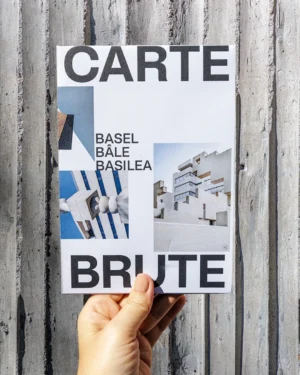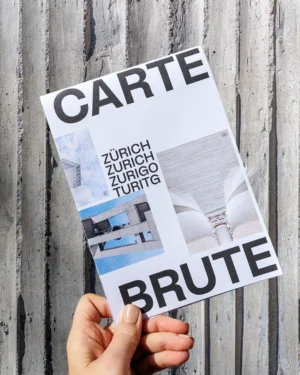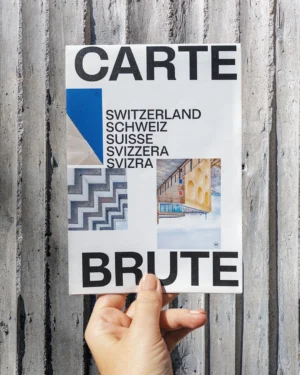Hochhaus zur Palme Tower

Words & Photography: Karin Bürki

- Commercial, Administrative
- Haefeli Moser Steiger
- 1955-1964
- Bleicherweg 33, 8002 Zurich
- Zürich
- Object of Local Significance
- Listed in Carte Brute Switzerland & Carte Brute Zürich
It introduced: a 50m high office tower! A drive-in bank counter next to a petrol station! A futuristic car deck and a Silberkugel, the city’s first fast-food restaurant! An open passage and access from all sides! A windmill-shaped plan! Boy, you couldn’t get more disruptively modern than that. And thus, our local Mad Men found an appropriate playground on Bleicherweg 33, two tram stops away from Paradeplatz, the financial heart of the city.
A two-storey base covers most of the site. It contains a shopping arcade and a large mezzanine for offices. Its deck serves as an open car park and is bordered by an ingenious prefabricated Eternit snow shelter. Its shape vaguely resembles a row of palm fronds. While elegantly shielding cars from view and the elements, it also acts as a visual tribute to the titular 19th-century villa, Haus zur Palme, which it replaced. The tower rests on eight mighty exposed concrete columns, only two of which are exposed for their full height. One of them is neatly encircled by a filigree double-helix ramp. It looks a bit like the Guggenheim in New York, or a distant memory of chief architect Werner Max Moser’s internship with Frank Lloyd Wright.
Zur Palme not only catapulted Zurich into the car age, it also marked the beginning of a veritable high-rise boom that was to last for a good decade.
A triumph of out-of-the-box thinking
A weeping chandelier and other curiosities










© Karin Bürki/HEARTBRUT
© Karin Bürki/Heartbrut







